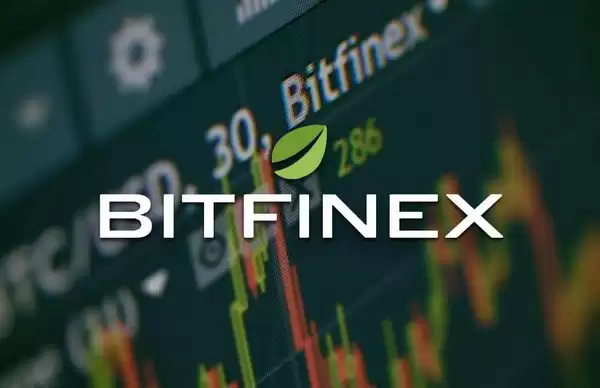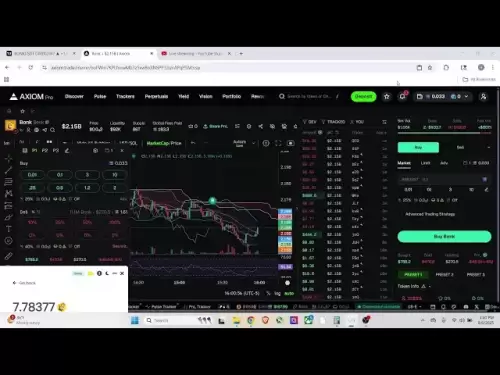-
 Bitcoin
Bitcoin $115100
1.27% -
 Ethereum
Ethereum $3675
2.71% -
 XRP
XRP $2.995
1.45% -
 Tether USDt
Tether USDt $1.000
0.02% -
 BNB
BNB $769.8
2.64% -
 Solana
Solana $168.0
3.25% -
 USDC
USDC $0.9999
-0.01% -
 TRON
TRON $0.3371
1.48% -
 Dogecoin
Dogecoin $0.2051
3.36% -
 Cardano
Cardano $0.7394
2.30% -
 Hyperliquid
Hyperliquid $38.15
0.42% -
 Stellar
Stellar $0.3966
-0.36% -
 Sui
Sui $3.486
2.93% -
 Chainlink
Chainlink $16.72
2.52% -
 Bitcoin Cash
Bitcoin Cash $568.0
4.36% -
 Hedera
Hedera $0.2440
2.59% -
 Ethena USDe
Ethena USDe $1.001
0.04% -
 Avalanche
Avalanche $22.16
2.06% -
 Litecoin
Litecoin $119.1
-0.73% -
 UNUS SED LEO
UNUS SED LEO $8.991
0.04% -
 Toncoin
Toncoin $3.232
-0.39% -
 Shiba Inu
Shiba Inu $0.00001233
2.82% -
 Uniswap
Uniswap $9.717
2.53% -
 Polkadot
Polkadot $3.664
1.85% -
 Dai
Dai $1.000
0.01% -
 Monero
Monero $281.2
-3.89% -
 Bitget Token
Bitget Token $4.350
1.55% -
 Cronos
Cronos $0.1428
5.07% -
 Pepe
Pepe $0.00001050
3.68% -
 Aave
Aave $262.3
3.54%
Bitfinex How much is the handling fee for 100x leverage
Leverage fees on Bitfinex vary based on loan duration, leverage ratio, and market conditions, influencing traders' financing costs.
Nov 11, 2024 at 09:56 am

Bitfinex Leverage Fees: A Comprehensive Guide
Understanding Leverage Fees on Bitfinex
Leverage fees, commonly referred to as funding fees or interest rates, are charges incurred by traders when using leverage to amplify their trading positions on cryptocurrency exchanges like Bitfinex. These fees compensate lenders for providing liquidity and assuming the additional risk associated with leveraged trading. The amount of leverage utilized, the duration of the trade, and the current market conditions all influence the magnitude of leverage fees.
Factors Affecting Leverage Fees on Bitfinex
Several factors contribute to the determination of leverage fees on Bitfinex:
- Loan Duration: Fees typically increase with the length of the loan period. Traders holding leveraged positions for extended durations incur higher financing costs.
- Market Volatility: High market volatility often leads to elevated leverage fees as lenders demand higher compensation for the increased risk of price fluctuations.
- Supply and Demand: The availability of lenders and borrowers in the market influences leverage fees. When demand for leverage exceeds supply, fees tend to rise, while ample liquidity can lead to lower fees.
- Leverage Ratio: The level of leverage employed significantly impacts fees. Higher leverage ratios typically attract higher financing costs due to the amplified risk involved.
Leverage Fee Structure on Bitfinex
Bitfinex employs a tiered leverage fee structure based on the loan duration and the leverage ratio utilized. The following table outlines the applicable fees for various leverage ratios:
| Leverage Ratio | Loan Duration | Fee Rate |
|---|---|---|
| Up to 5x | Up to 1 day | 0.01% per day |
| Up to 10x | Up to 1 day | 0.02% per day |
| Up to 20x | Up to 1 day | 0.05% per day |
| Up to 50x | Up to 1 day | 0.10% per day |
| Up to 100x | Up to 1 day | 0.20% per day |
Please note that these rates are subject to change based on market conditions and may vary for different trading pairs.
Example of Leverage Fee Calculation
Consider a trader opening a leveraged position on Bitfinex with a leverage ratio of 50x and a loan duration of 1 day for a notional value of $100,000:
Leverage Fee = Fee Rate x Notional Value x Loan Duration
= 0.10% x $100,000 x 1 day
= $10
Therefore, the trader incurs a leverage fee of $10 for maintaining the leveraged position for one day.
Tips for Minimizing Leverage Fees
Traders can employ several strategies to reduce the impact of leverage fees on their trading activities:
- Optimize Loan Duration: Shortening the loan period can significantly reduce leverage fees, especially during periods of high volatility.
- Monitor Market Conditions: Staying abreast of market conditions and leveraging periods of low volatility can minimize financing costs.
- Consider Lower Leverage Ratios: Using lower leverage ratios reduces the cost of borrowing and limits the potential losses in case of adverse price movements.
- Explore Alternative Funding Sources: Utilizing external funding platforms or peer-to-peer lending services may offer more competitive financing rates.
Conclusion
Leverage fees play a crucial role in managing risk and ensuring the sustainability of leveraged trading on Bitfinex. Understanding the fee structure, the influencing factors, and the available strategies for minimizing costs empowers traders to make informed decisions and optimize their trading experience. By carefully considering these factors, traders can effectively utilize leverage to enhance their trading potential while mitigating the associated risks and expenses.
Disclaimer:info@kdj.com
The information provided is not trading advice. kdj.com does not assume any responsibility for any investments made based on the information provided in this article. Cryptocurrencies are highly volatile and it is highly recommended that you invest with caution after thorough research!
If you believe that the content used on this website infringes your copyright, please contact us immediately (info@kdj.com) and we will delete it promptly.
- BlockDAG, Litecoin, and Cardano: Charting the Course in Crypto's Dynamic Waters
- 2025-08-07 09:09:06
- Fireverse Token: Igniting a Musical Revolution in Web3
- 2025-08-07 08:27:45
- Ethereum, L2 Withdrawals, and Decentralization: A New Yorker's Take
- 2025-08-07 08:32:33
- Avalanche vs. Ruvi AI: Daily Sales Tell a Story of Crypto Disruption
- 2025-08-07 06:29:35
- DeSoc: The Crypto to Buy Now for a Decentralized Future (and Maybe 43x Gains!)
- 2025-08-07 06:50:16
- Arctic Pablo Coin: Riding the Meme Coin Wave with a Deflationary Twist
- 2025-08-07 07:18:13
Related knowledge

Why is my Bitstamp futures position being liquidated?
Jul 23,2025 at 11:08am
Understanding Futures Liquidation on BitstampFutures trading on Bitstamp involves borrowing funds to open leveraged positions, which amplifies both po...

How to report Bitstamp futures for taxes?
Jul 30,2025 at 08:35am
Understanding Bitstamp Futures and Taxable EventsWhen trading Bitstamp futures, it’s essential to recognize that these financial instruments are treat...

Does Bitstamp offer inverse contracts?
Jul 23,2025 at 01:28pm
Understanding Inverse Contracts in Cryptocurrency TradingIn the realm of cryptocurrency derivatives, inverse contracts are a specific type of futures ...

What is the difference between futures and perpetuals on Bitstamp?
Jul 27,2025 at 05:08am
Understanding Futures Contracts on BitstampFutures contracts on Bitstamp are financial derivatives that allow traders to speculate on the future price...

How to find your Bitstamp futures trade history?
Jul 23,2025 at 08:07am
Understanding Bitstamp and Futures Trading AvailabilityAs of the current state of Bitstamp’s service offerings, it is critical to clarify that Bitstam...

Can I use a trailing stop on Bitstamp futures?
Jul 23,2025 at 01:42pm
Understanding Trailing Stops in Cryptocurrency TradingA trailing stop is a dynamic type of stop-loss order that adjusts automatically as the price of ...

Why is my Bitstamp futures position being liquidated?
Jul 23,2025 at 11:08am
Understanding Futures Liquidation on BitstampFutures trading on Bitstamp involves borrowing funds to open leveraged positions, which amplifies both po...

How to report Bitstamp futures for taxes?
Jul 30,2025 at 08:35am
Understanding Bitstamp Futures and Taxable EventsWhen trading Bitstamp futures, it’s essential to recognize that these financial instruments are treat...

Does Bitstamp offer inverse contracts?
Jul 23,2025 at 01:28pm
Understanding Inverse Contracts in Cryptocurrency TradingIn the realm of cryptocurrency derivatives, inverse contracts are a specific type of futures ...

What is the difference between futures and perpetuals on Bitstamp?
Jul 27,2025 at 05:08am
Understanding Futures Contracts on BitstampFutures contracts on Bitstamp are financial derivatives that allow traders to speculate on the future price...

How to find your Bitstamp futures trade history?
Jul 23,2025 at 08:07am
Understanding Bitstamp and Futures Trading AvailabilityAs of the current state of Bitstamp’s service offerings, it is critical to clarify that Bitstam...

Can I use a trailing stop on Bitstamp futures?
Jul 23,2025 at 01:42pm
Understanding Trailing Stops in Cryptocurrency TradingA trailing stop is a dynamic type of stop-loss order that adjusts automatically as the price of ...
See all articles

























































































